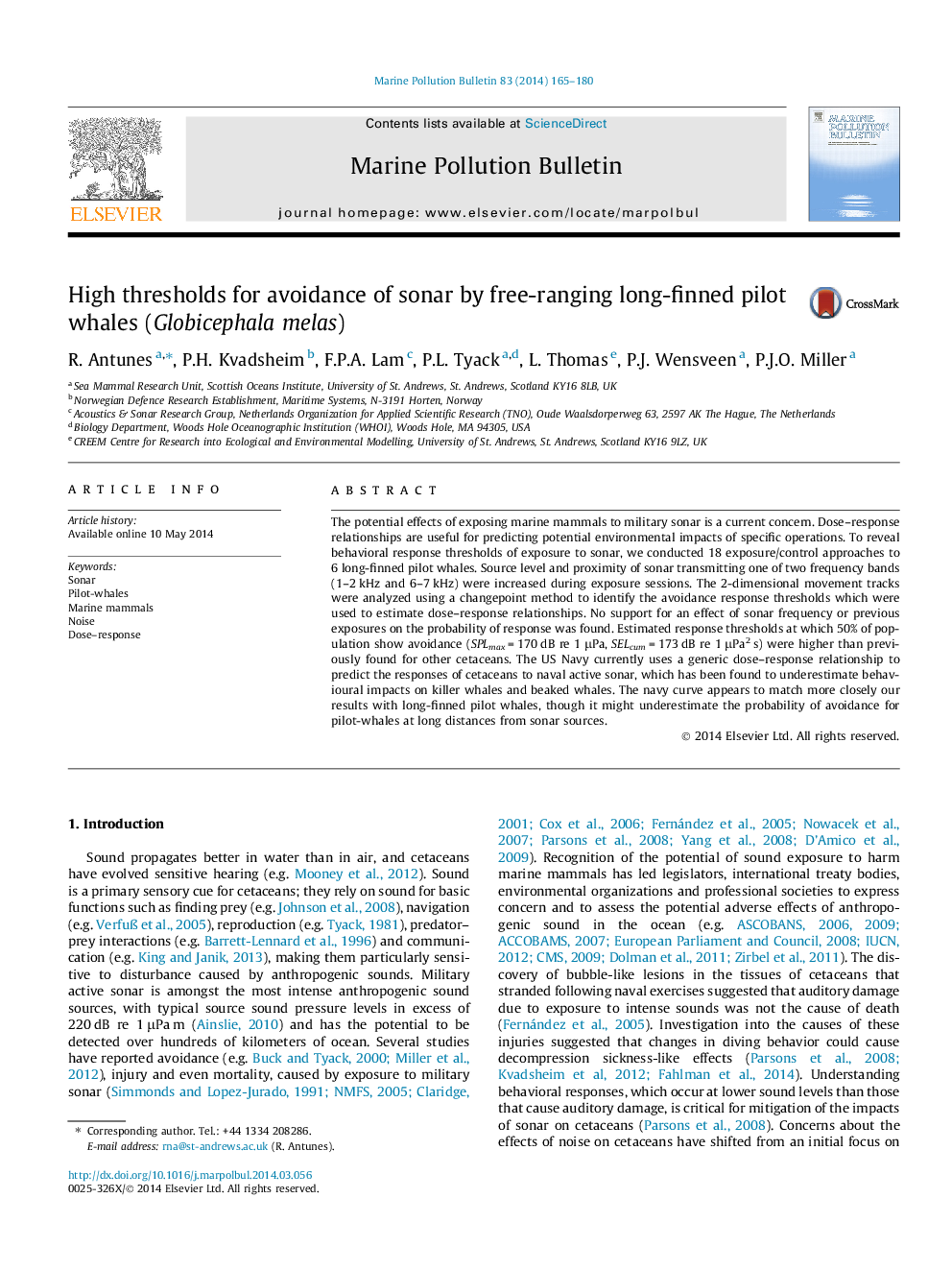| Article ID | Journal | Published Year | Pages | File Type |
|---|---|---|---|---|
| 6358766 | Marine Pollution Bulletin | 2014 | 16 Pages |
â¢Pilot-whale sonar response thresholds higher than found for other cetaceans.â¢No effect of sonar frequency or previous exposures on probability of response.â¢US Navy dose-response underestimates probability of pilot-whales avoidance at long ranges.
The potential effects of exposing marine mammals to military sonar is a current concern. Dose-response relationships are useful for predicting potential environmental impacts of specific operations. To reveal behavioral response thresholds of exposure to sonar, we conducted 18 exposure/control approaches to 6 long-finned pilot whales. Source level and proximity of sonar transmitting one of two frequency bands (1-2 kHz and 6-7 kHz) were increased during exposure sessions. The 2-dimensional movement tracks were analyzed using a changepoint method to identify the avoidance response thresholds which were used to estimate dose-response relationships. No support for an effect of sonar frequency or previous exposures on the probability of response was found. Estimated response thresholds at which 50% of population show avoidance (SPLmax = 170 dB re 1 μPa, SELcum = 173 dB re 1 μPa2 s) were higher than previously found for other cetaceans. The US Navy currently uses a generic dose-response relationship to predict the responses of cetaceans to naval active sonar, which has been found to underestimate behavioural impacts on killer whales and beaked whales. The navy curve appears to match more closely our results with long-finned pilot whales, though it might underestimate the probability of avoidance for pilot-whales at long distances from sonar sources.
